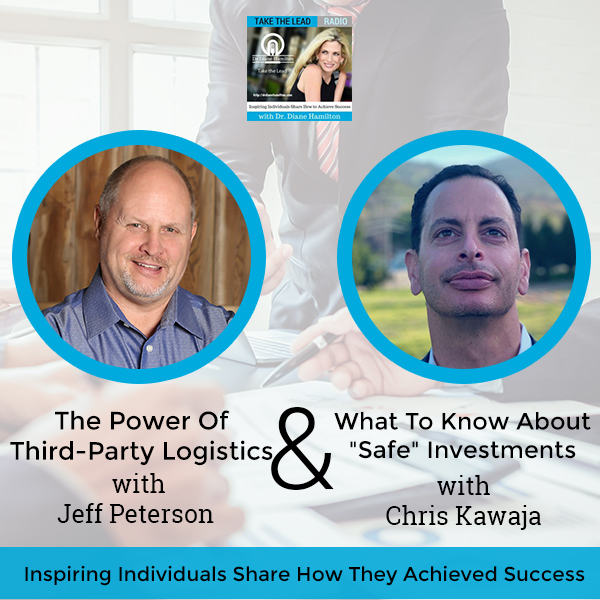The Power Of Third-Party Logistics With Jeff Peterson And What To Know About “Safe” Investments With Chris Kawaja

The Power Of Third-Party Logistics With Jeff Peterson And What To Know About “Safe” Investments With Chris Kawaja
Much of the success of the eCommerce industry can be credited to third-party logistics, which does the legwork to make sure products are delivered. Dr. Diane Hamilton is joined by Jeff Peterson, the Co-Founder of Geneva Supply. Dr. Diane and Jeff discuss achieving success in the field of third-party logistics.
Investments are only as good as what you get them to become, so you have to be smart about them. Chris Kawaja, the Founder of Upwarding.com, sits down with Dr. Diane Hamilton. With years of wall Street experience, Chris developed a skeptical eye towards traditional financial advice. He now owns a variety of assets ranging from eCommerce businesses to legal settlements and real estate. Together, Dr. Diane and Jeff dive into the fast-paced world of investing.
What to Know before Investing in IPOs like LinkedIn or Pandora
Is investing in an initial public offering (IPO) a good idea? With the recent LinkedIn and Pandora IPOs and talk of future IPOs with Twitter and Facebook, this is a question that many investors may be considering. Imagine getting in on the ground floor of a giant like Coca-Cola? It might have been a wild ride, but those that hung in there, had a nice payoff. Joshua Kennon of About.com reported, “A single share of Coca-Cola purchased for $40 at the IPO in 1919, for example, crashed to $19 the following year. Yet, today, that one share, with dividends reinvested, is worth over $5 million.”
Kennon suggests that if you have the stomach for risking your investment, you might want to consider whether the company can grow at a rate high enough to justify its price, whether there are any patents or trademarks to protect the business, whether you’d want to hold onto this stock for 30 years and if it fell by 50% would you have the stomach to handle it?
DailyFinance reported some additional questions to ask before investing in an IPO: (1) Is there an attractive market for the product? (2) Does the company have a significant share of the market? (3) Is the company’s management team experienced? (4) Is the company growing and profitable?
The following list shows some more recent IPO original offering prices compared to their current price (as of July, 2011):
Google Initial Offering Price, 2004: $85/share
Google Price July, 2011: $530/share
Pandora Initial Offering Price, June, 2011: $16/share
Pandora Price July, 2011: $19/share
LinkedIn Initial Offering Price, May, 2011: $45/share
LinkedIn Price July, 2011: $98/share
Many employees of companies like Google became wealthy overnight when their companies went IPO. The New York Times article Google’s IPO 5 Years Later stated, “When the offering finally happened, it turned an estimated 1,000 Google employees into millionaires, at least on paper. Since then, many more millionaires have been minted inside the Googleplex, the Web search company’s headquarters in Mountain View, Calif.”
Not all startups have been this successful. Businesspundit lists the 25 Internet Startups that Bombed Miserably. MSMoney also warned, “Many investors fret they’ll miss the next big thing because they have no access to the IPO market, but study after study has proven that IPOs historically underperform the broader markets.” FIGuide echoed that same sentiment in their article Should You Invest in IPOs, stating that there might be better options. “A seminal paper published in The Journal of Finance looked at IPOs from 1970 to 1990. During the five years after issuance, investors in these IPOs got average annual returns of only 5%.(1) By contrast, the overall stock market’s average annual return from 1970 to 1990 was more than double that figure, at 10.8%. To put this in perspective, $1,000 invested at 5% for 20 years would have generated $2,653, while $1,000 invested at 10.8% would have generated $7,777, almost three times as much.”